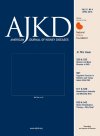Use of the Furosemide Fludrocortisone Test to Clinically Assess Distal Tubular Acidification
Urine acidification is the net effect of bicarbonate reabsorption, H+ secretion, and the presence of buffers. In distal renal tubular acidosis (dRTA), there is a defect in H+ secretion in the collecting duct. dRTA is traditionally diagnosed by an oral ammonium chloride (NH4Cl) loading test. Patients with dRTA are unable to adequately acidify urine after an acid load with NH4Cl.1 However, this test often leads to nausea and vomiting, resulting in early termination of the test and inconclusive results.



